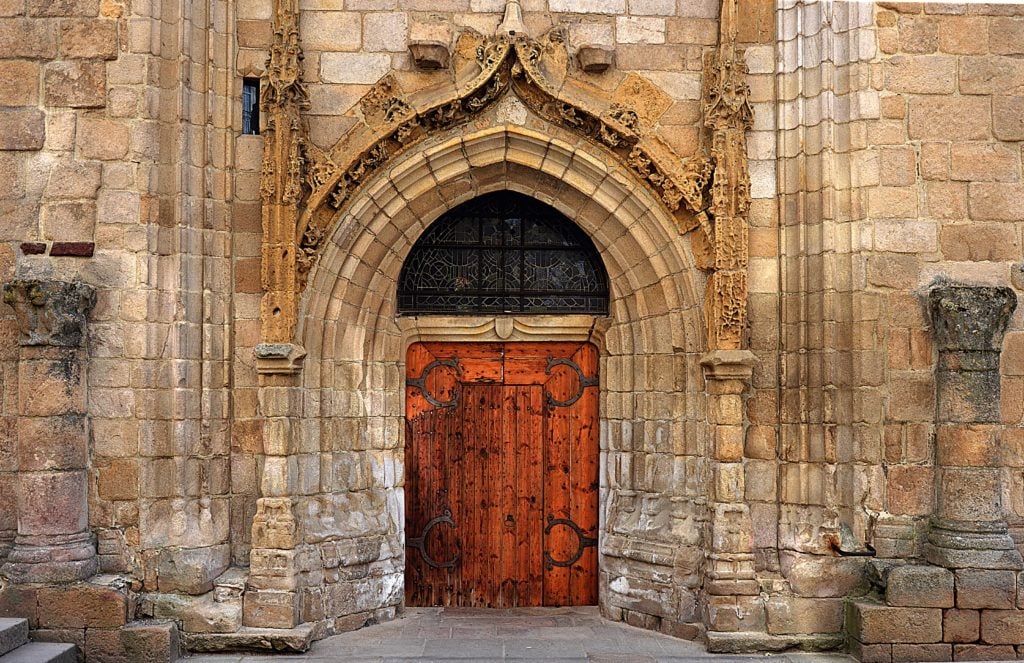
Posted in: World Wedding Customs
 Medieval wedding ceremonies began outside the church doors. Photo by Pixabay on Pexels.
A Medieval wedding ceremony took place following a procession from the bride's home to the church doors. The most elaborate processions belonged to those of royal birth. However, these set the standard for all wedding processions.
Medieval wedding ceremonies began outside the church doors. Photo by Pixabay on Pexels.
A Medieval wedding ceremony took place following a procession from the bride's home to the church doors. The most elaborate processions belonged to those of royal birth. However, these set the standard for all wedding processions.
A Medieval Wedding Procession
The Minstrels
A Medieval wedding procession began with the minstrels. The minstrels played various instruments, including bagpipes, the six-stringed viol, flutes, drums, and trumpets. For brides and grooms of a lower caste, their families might employ family members or friends to lead the procession with instruments and singing. Though primarily the servants of royals and nobles, eventually minstrels broke away from the courts. As traveling troubadours, they provided entertainment and music to all who would listen.The Bride & Groom
Following the musicians, the bride and groom walked side by side toward the church. Tradition held that the bride walk on the groom's left side, since God fashioned Eve out of Adam's left rib. Directly behind the bride and groom, rode the best man on horseback. Outfitted with his sword, the groom chose him for his skills as a swordsman - the best swordsman, in fact. He rode along to protect the bride and groom from harm along the way. Remember, long ago brides fell prey to kidnappers. Also, such a display of wealth might attract the wrong kind of attention. Furthermore, despite the posting of the banns, some nefarious parties might attempt to put a stop to the wedding. Following just behind the best man, the bride's parents walked just behind the groom's parents.Outside the Church Doors
Upon arriving at the church, the minstrels ceased playing and those attending the bride and groom lined up quietly outside the church doors. The priest, holding the wedding ring, stood just in front of the closed doors, beneath the portico. When all fell silent, the priest opened the proceedings with a series of important questions.- How old is the bride and groom?
- Are the bride and groom related to each other by blood?
- Does the bride's father permit the marriage?
- Were the banns published properly?
- Do both the bride and the groom consent freely to enter into marriage?
The Vows
At this point, the bride's father encouraged his daughter to take her place in front of the priest. Meanwhile, the best man escorted the groom to stand beside his bride. Again, the bride stood to the left side of the groom, both faced the priest. At this point, the groom recited his vows - called plighting his troth. A groom's vows during the mid-1400s closely resemble Christian vows spoken to this day. The groom promised "to have and to hold" his bride in bed and at the table, whether she be fair or ugly, "for better or worse, in sickness and in health, to death us depart." {1} The bride offered no vows, remaining silent throughout the proceedings. Following the vows, the priest offered a short homily on the sacred act of marriage. Then he blessed the wedding ring and handed it to the groom.The Wedding Ring
Until the 16th century, during a Medieval wedding only the bride received a wedding ring. As the groom slid the wedding ring on and off the bride's first, second, and third fingers, he recited the following: "In the name of the Father, and of the Son, and of the Holy Ghost, with this ring I thee wed." {1} At some point during the 14th century, a priest declared that a vein ran straight from a woman's heart to her left fourth finger. Thus, when she wore her wedding ring on that finger, she ensured that love and unity would remain with them throughout their marriage.A Medieval Wedding Mass
Finally, the priest opened the church doors and ushered the bride and groom, as well as their attendants and the best man, to the altar. Everyone else took their seats among the other guests. The bride and groom knelt before the priest at the altar. Over their heads, their attendants held a canopy over their heads while the priest said mass. Upon the conclusion of mass, the attendants removed the canopy. The priest then bestowed upon the groom a kiss of peace. The groom, in turn, bestowed the kiss of peace upon his bride. The priest then closed the wedding with a blessing. As the bride and groom walked out of the church, the choir chanted Angus Dei. ~Angela Magnotti Andrews {1} Diehl, Daniel and Mark Donnelly. "Medieval Celebrations: How to Plan Holidays, Weddings, and Feasts with Recipes, Customs, Costumes, Decorations, Songs, Dances, and Games." Mechanicsburg, PA: Stackpole Books, 2001.5 years ago
205 view(s) 